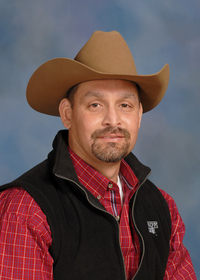Green Antelopehorn Milkweed Tolerance to Right-of-Way Herbicides
Milkweed has a dual history: it has been explored as a potential crop, while others saw it as a weed.
Some of the earliest European settlers to North America, colonists in Pomeioc, Virginia, used milkweed seedpod floss to make undergarments. One source states that indigenous Americans used butterfly (Asclepias tuberosa), common (Asclepias syriaca), and swamp (Asclepias incarnata) milkweed medicinally. Other research summarized published literature on cultivation of various species of milkweed for rubber, oil, or fiber and suggested the floss could be used to fill life preservers. Seedpods were collected, dried, and processed for that purpose during World War II. More recently, entrepreneurs marketed pillows, comforters, and clothing filled with floss as a down substitute.
In contrast, butterfly milkweed was listed in the mid-1800s as the primary weedy species of Asclepias in cultivated fields, and the medicinal value of milkweed was found to be insignificant. Fifty years later, common milkweed was listed as one of 200 agricultural weeds in the USDA Yearbook of Agriculture 1895. One researcher noted control methods for four species of milkweed and reported the value of butterfly, common, and swamp milkweed roots ranged from 4 cents to 10 cents per pound for medicinal use.
Decline of monarch butterfly populations since 1996 has been attributed at least partly to decreased populations of milkweeds. In 2015, researchers attributed the decline to the loss of suitable reproductive habitat (milkweed) partly due to increased production of genetically modified crops and the herbicides applied to those crops. A 2016 U.S. government initiative to protect monarch butterflies as well as other pollinators included federal funds to promote pollinator habitat on privately owned property, federally managed lands, and electric, utility, and highway rights-of-way.

The USDA Plants Database lists 20 species of milkweed native to Mississippi. In a survey of Mississippi highway right-of-way vegetation, three species of milkweed were found on roadsides maintained by the Mississippi Department of Transportation. In 800 plots randomly scattered across Mississippi, green antelopehorn (Asclepias viridis) (Figure 1) was found in four plots, common milkweed was found in two plots, and Michaux’s milkweed (Asclepias michauxii) was found in one plot. While milkweeds do occur, they are not common on major roadside rights-of-way in Mississippi.
In an effort to determine the impact of roadside vegetation management practices on milkweed, Mississippi State University conducted research in 2016 and 2017 on field populations of green antelopehorn. Plants were sprayed the first week of May both years. The number of green antelopehorn stems was counted in each plot and recorded before herbicide application and 1 year later. To determine the impact on green antelopehorn, the difference in stem numbers before and 1 year after application was compared to the difference where no herbicide was applied. Treatments were applied to four replicated plots in a randomized complete block design. Data were analyzed statistically to determine valid differences among the treatments. Results are summarized in Table 1.
Researchers found that only four herbicides consistently reduced green antelopehorn populations both years: Roundup (glyphosate), Arsenal (imazapyr), and Viewpoint (imazapyr+aminocyclopyrachlor+metsulfuron) applied at all rates evaluated, and Garlon 4 Ultra/Remedy Ultra (triclopyr ester) applied at the high rate. Opensight/Chaparral (aminopyralid+metsulfuron) reduced populations one year but not both, as did the high rates of Vastlan (triclopyr choline) and Graslan (picloram+2,4-D choline). This could be due to ecotype, morphological development, or environmental differences between these populations and years. The vast majority of herbicides used for integrated vegetation management on roadsides and rights-of-way did not have a negative impact on green antelopehorn populations. One herbicide, Outrider (sulfosulfuron), applied at either rate resulted in an increase in the number of milkweed stems compared to the untreated.
Additional research needs to be done to investigate the tolerance of other species of milkweed to these herbicides.
|
Active Ingredient(s) |
Trade Name |
Rate/A |
2016 |
2017 |
|
aminocyclopyrachlor |
Method (2 lb ae/gal) |
8 fl oz 12 fl oz |
= |
= |
|
aminocyclopyrachlor+chlorsulfuron |
Perspective (55.3% ai) |
2.5 oz 5 oz |
= |
= |
|
aminopyralid |
Milestone (2 lb ae/gal) |
3.5 fl oz 7 fl oz |
= |
= |
|
aminopyralid+2,4-D |
GrazonNext HL (3.74 lb ag/gal) |
1 pt 2 pt |
= |
= |
|
aminopyralid+metsulfuron |
Chaparral/Opensight (71.6% ai) |
1.5 oz 3 oz |
- |
= |
|
foramsulfuron+iodosulfuron+thiencarbazone |
Derigo (36.4% ai) |
3 oz 6 oz |
= |
= |
|
fluroxypyr |
Vista (2.8 lb ae/gal) |
11 fl oz 22 fl oz |
= |
= |
|
glyphosate |
Roundup Powermax (4.5 lb ae/gal) |
1 qt 2 qt 4 qt |
- |
- |
|
hexazinone |
Velpar L (2 lb ai/gal) |
1.5 pt 3 pt |
= |
= |
|
imazapyr |
Arsenal (2 lb ae/gal) |
1 pt 2 pt |
- |
- |
|
imazapyr+aminocyclopyrachlor+metsulfuron |
Viewpoint (61.7% ai) |
10 oz 20 oz |
- |
- |
|
metsulfuron |
Escort XP (60% ai) |
0.25 oz 0.5 oz |
= |
= |
|
metsulfuron+chlorsulfuron |
Cimarron Plus (63% ai) |
0.6 oz 1.2 oz |
= |
= |
|
metsulfuron+nicosulfuron |
Pastora (71.2% ai) |
0.75 oz 1.5 oz |
= |
= |
|
picloram+2,4-D (choline) |
Graslan (3.81 lb ae/gal) |
1.3 pt |
= |
= |
|
picloram+2,4-D (choline) |
Graslan (3.81 lb ae/gal) |
2.67 pt |
- |
= |
|
sulfometuron |
Oust (75% ai) |
0.5 oz 1.0 oz |
= |
= |
|
sulfosulfuron |
Outrider (75% ai) |
0.65 oz 1.3 oz |
+ |
+ |
|
triclopyr (choline salt) |
Vastlan (4 lb ae/gal) |
2 pt |
= |
= |
|
triclopyr (choline salt) |
Vastlan (4 lb ae/gal) |
4 pt |
= |
- |
|
triclopyr ester |
Remedy Ultra/Garlon 4 Ultra (4 lb ae/gal) |
2.5 pt |
- |
= |
|
triclopyr ester |
Remedy Ultra/Garlon 4 Ultra (4 lb ae/gal) |
5 pt |
- |
- |
= indicates green antelopehorn populations not different than the untreated; + indicates populations increased compared to the untreated; - indicates populations decreased compared to the untreated.
References
Darlington, W. (1847). Agricultural botany: An enumeration and description of useful plants and weeds, which merit the notice, or require the attention of American agriculturalists. JW Moore.
Georgia, A. (1927). Manual of weeds with description of all the most pernicious and troublesome plants in the United States and Canada, their habits of growth and distribution with methods of control. MacMillan Company.
Gerarde, J. (1597). The herball or general historie of plantes. John Norton.
Henkel, A. (1907). American root drugs. USDA Bureau of Plant Industry Bulletin 107. Government Printing Office.
Howard, E. (2015). Where are the monarchs? Examining issues that affect the monarch populatino.
Knudsen, H. D., & Sayler, R. Y. (1992). Milkweed: The worth of a weed. In E. Madigan (Ed.), New crops, new uses, new markets: Industrial and commercial products from U.S. agriculture, 118–123. Government Printing Office.
Neish, A. C., & Burns, J. W. (1921). Utilization of the common milkweed. Canadian Chemistry and Metallurgy, 5(11), 316–319.
U.S. Department of Agriculture. (2018). PLANTS database.
U.S. Department of Agriculture. (1896). Two hundred weeds: How to know them and how to kill them. In C. W. Dabney (Ed.), Yearbook of the United States Department of Agriculture 1895, 592–611. Government Printing Office.
Whiting, A. G. (1943). A summary of the literature on milkweeds (Asclepias spp.) and their utilization. USDA Biographical Bulletin No 2. Government Printing Office.
The information given here is for educational purposes only. References to commercial products, trade names, or suppliers are made with the understanding that no endorsement is implied and that no discrimination against other products or suppliers is intended.
Publication 3265 (POD-09-24)
By John Byrd, PhD, Extension/Research Professor, Plant and Soil Sciences; Nolan Thorne, former Graduate Assistant; David Russell, PhD, former Extension Associate; and Maria Zaccaro, former Graduate Assistant, Plant and Soil Sciences.
The Mississippi State University Extension Service is working to ensure all web content is accessible to all users. If you need assistance accessing any of our content, please email the webteam or call 662-325-2262.






